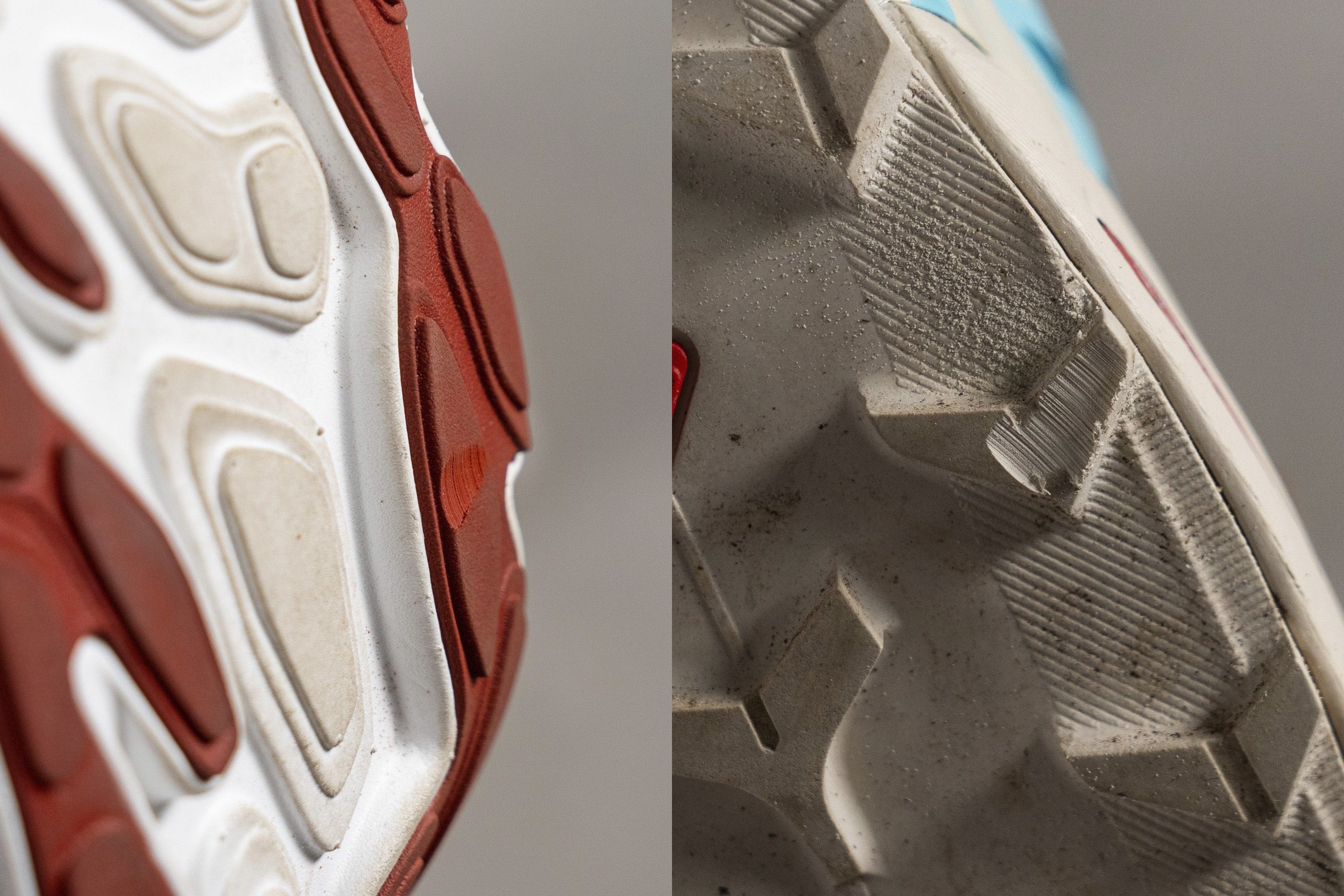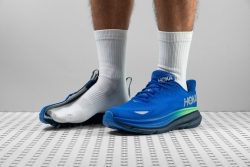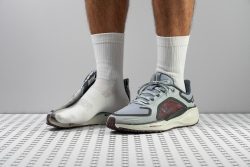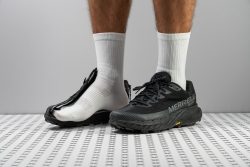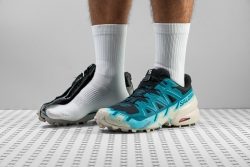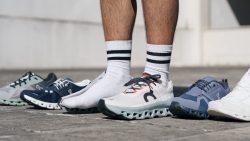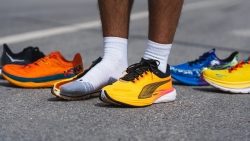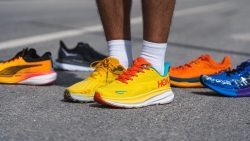5 Best Winter Running Shoes in 2025

We buy shoes ourselves. We earn commissions when you buy through us, at no extra cost. Why trust us
Running shoes for winter are protective, very grippy, and, in most cases, waterproof. Some running shoes are simply not breathable, so they are great for cold weather as long as it is dry.
It’s not easy to filter out the best of the best among winter shoes, which is where we did the work: we tested these running shoes on the trails, in cold and both wet and dry weather, and we inspected the upper in the lab. From observing it to see where it would let the smoke out that we pumped into the shoe to looking at it under a microscope to inspect the density of the threads, vent holes, and all the layers.
We're happy to share our favourite picks with you here. You can also read more about winter shoes, waterproof membranes, grip needed for winter, and much more below.
How we test winter running shoes
This is the process we stick to when reviewing winter running shoes and choosing the top picks:
- We buy all the winter running shoes with our own money. We write and publish exactly what we experience with the shoes. There's no brand or authority dictating us what to write and what to delete.
- We log hours of runs in each pair to fully understand the shoes' pros and cons.
- We take the shoes to our lab, where we subject them to our standardised tests. Traction, toebox durability, lug depth, energy return... yes, we measure it all and publish all the lab data in the reviews and in the comparison table where you can add shoes you want to compare.
- We cut the shoes in half to look at all the layers, especially waterproof ones, and to perform lab tests that can't be done on intact shoes.
Best winter running shoes overall
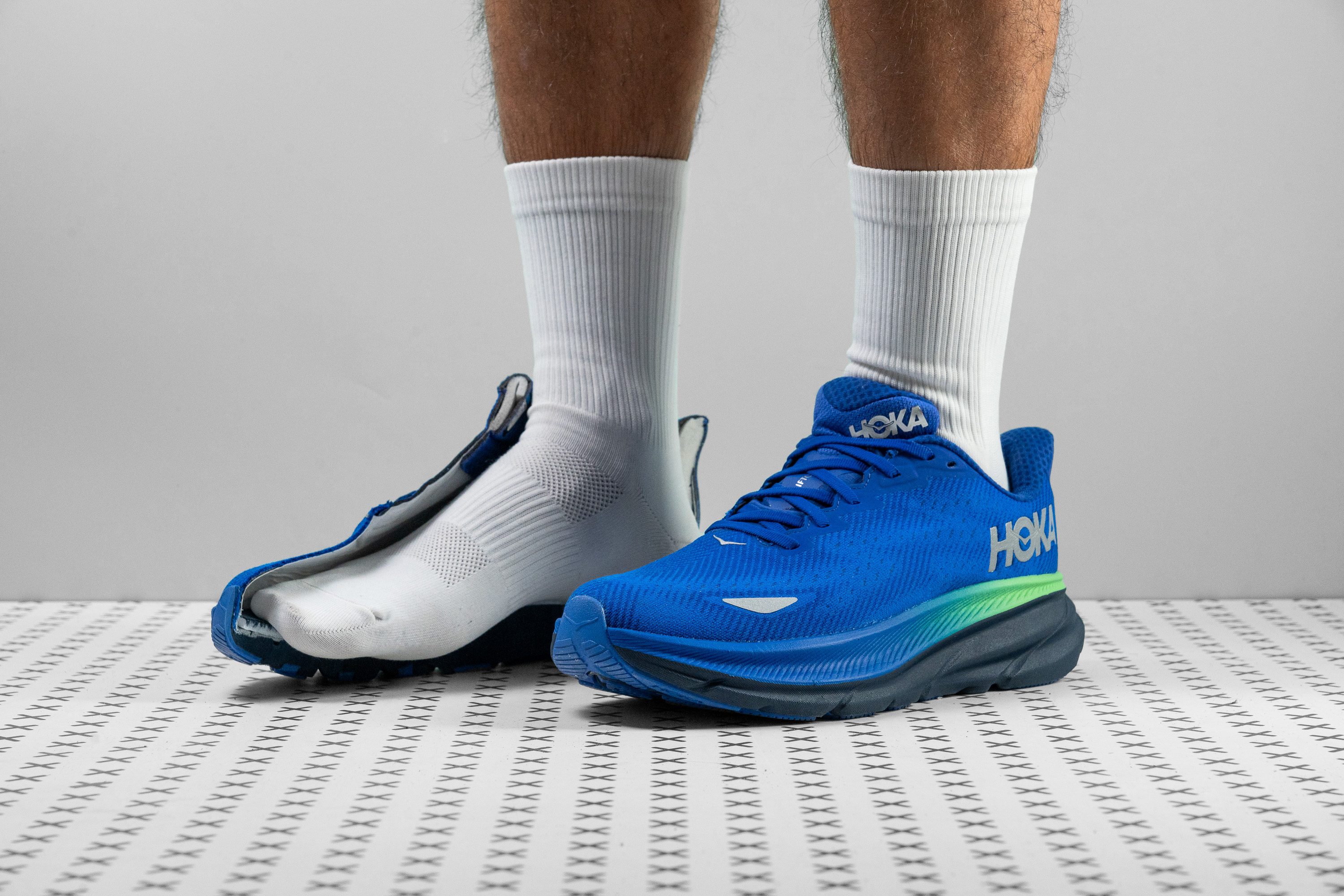



















































What makes it the best?
In our lab assessments and runs, Hoka’s Clifton 9 GTX stood out as the best winter running shoe. Wrapped in Gore-Tex membrane, it offers effective waterproofing and warmth. We could easily and confidently move through mixed terrains with its lightweight and stable build.
The Clifton 9 GTX feels well-cushioned with its above-average 37.2/28.6 mm stack, while maintaining a low figure to enhance agility. Weighing 9.6 oz (271g) on our scale, it’s surprisingly light for a waterproof shoe!
We felt sure-footed and centred throughout our runs, courtesy of the wide and rigid platform. We measured its dimensions at 120.9/97.2 mm, while its twist resistance earned it the maximum 5/5 torsional rigidity score.
Other than its waterproof Gore-Tex membrane, the jacquard mesh upper is compact to block out water droplets. Despite its dense nature, it surprisingly allows little ventilation, scoring 3/5 in breathability. It’s extremely rare for GTX shoes to go beyond 1/5! However, those seeking the warmest shoe available won't be impressed with this shoe. We advise wearing thick or warm socks when using the Clifton 9 GTX.
Pros
- Exceptionally cushioned
- Comfortable and long-lasting upper
- Ideal for winter conditions
- Only $15 more expensive than the non-waterproof Clifton
- Still remarkably lightweight even with Gore-Tex
- Excellent for easy and moderate-paced runs
- Incredibly stable for neutral runners
- Ultra-durable Durabrasion outsole
Cons
- May be too narrow for many
- Heel-to-toe drop significantly differs from Hoka's claims
- Not enough energy return
- It needs more grip in wet surface
Winter running shoes with the best shock absorption





















































What makes it the best?
We ran with our winter running shoes through the snowy season, cut them open in the lab, and discovered Nike’s Pegasus 41 GTX offers elite shock absorption. We found that it ensures no off-season as it delivers the protection, warmth, and grip we need for frosted paths.
Our feet feel well-protected even if we’re out on long runs. Our calliper shows an above-average 36.3 mm heel, which was rated with an impressive 129 SA in our shock absorption test. These figures explain the gentle landings we experienced and why our legs didn’t feel tired right away.
Our feet were warm and toasty throughout our runs thanks to the solid construction of the upper and the Gore-Tex membrane that blocks off cold air and water. Not a wisp of smoke escaped in our breathability test, earning the lowest 1/5 score, the number we want to see for snowy weather.
The Storm-Tread outsole delivers a steady ride to confidently tackle icy roads. Just like winter tyres, it performs best in slick conditions and is even designed to channel water away. No amount of slippery roads or melted ice could stop us from burning the miles.
Unfortunately, this shoe’s shock absorption will best be enjoyed by heel strikers. The forefoot has higher ground feel, so we recommend mid-to-forefoot strikers seeking maximum impact protection to go for another shoe.
Pros
- Waterproof Gore-Tex membrane
- Dual Air Zoom units
- Improved tongue padding
- Durable yet comfy upper
- Rugged toe bumper
- ReactX bouncy foam
- Keeps feet warm
- Reliable grip on wet surfaces
- Amazing for heel strikers
Cons
- Tapered toebox
- Heavy
- Outsole durability concerns
- Maybe a bit pricey
Best winter running shoes for trails
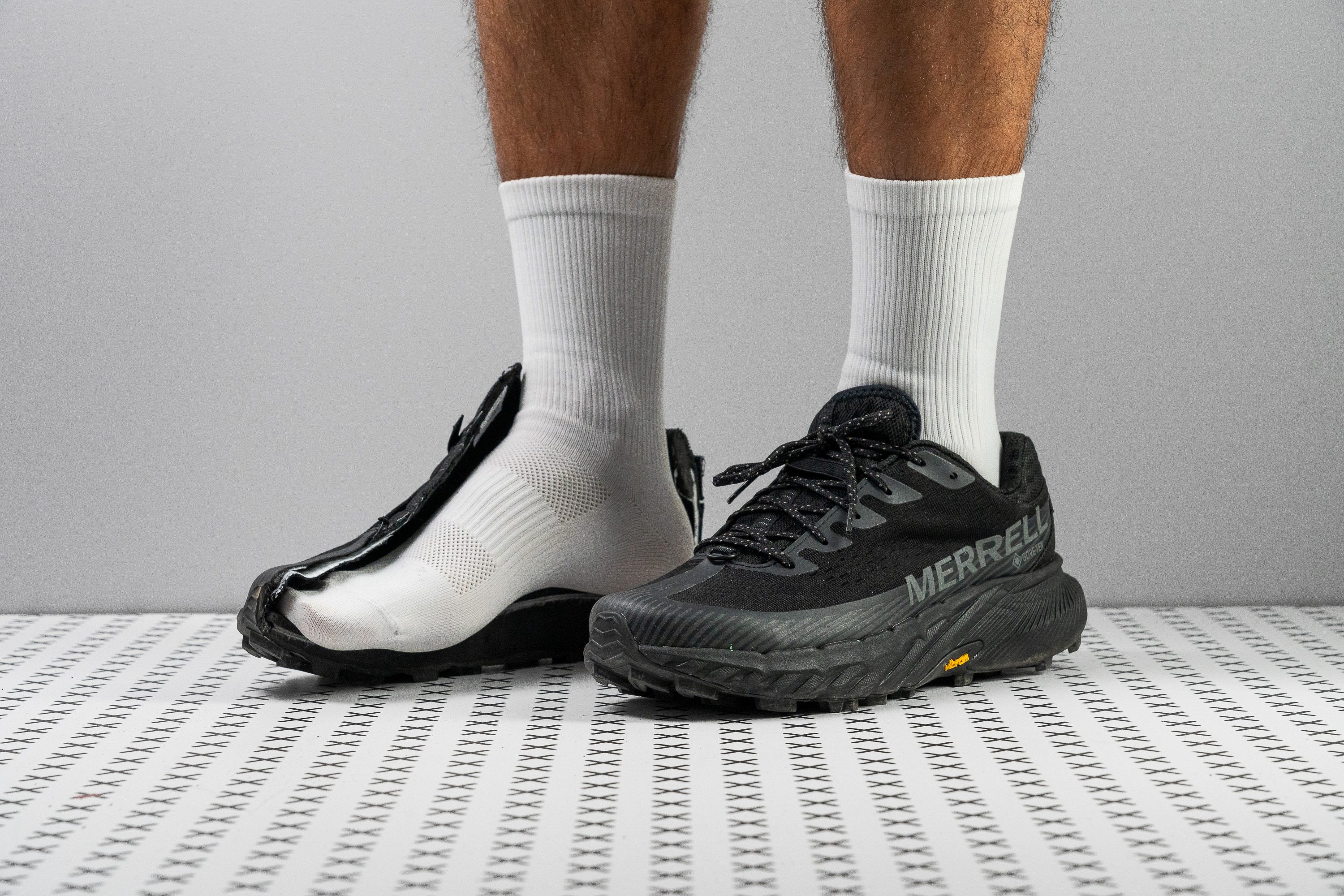













































What makes it the best?
In our runs, Merrell Agility Peak 5 GTX shows consistent performance even as the weather transitions to sub-zero temperatures. It remains easy to manoeuvre and comfortable, protecting our feet all around from its airtight Gore-Tex membrane on top to its grippy Vibram Megagrip outsole underneath. Our lab results prove it's the ideal winter running shoe for the trails.
The AP5 GTX features the world-class Vibram outsole, and it confirms its gold status by showing unwavering traction in our runs on snowy tracks. In addition, it has deep 4.4 mm chevron-shaped lugs, which are designed to shed off soft ground. We also found a rock plate that further protects our feet from underfoot hazards that may be hidden in the snow, such as sharp rocks and protruding roots.
The upper is made of a very dense mesh and secures us further with its Gore-Tex membrane. Not a hint of smoke escaped in our lab test, earning a 1/5 breathability score and confirming its warm embrace.
The shoe has a lot of give to it, which makes it feel natural for hikes and walks. In our bend test, it emerged 5.9% more flexible than average, proving it’s easy to control.
However, we caution that the toebox is more tapered than average. Wide-footed runners are not in this shoe’s market, but for those with medium-sized feet, we recommend trying on the shoe with thick socks to ensure a comfortable fit.
Pros
- True waterproof protection
- Grippy, trail-ready Vibram outsole
- Perfect for cold, wet climates
- Can handle some challenging conditions
- Stable yet cushioned heel
- Improved for hiking and walking
- Well-designed outsole lugs
- Great build quality
- Keeps feet warm
- Rock plate
Cons
- Narrow toebox
- Heel padding durability concerns
- No reflective elements
- Drop differs too much from stated
Winter running shoes with the best traction
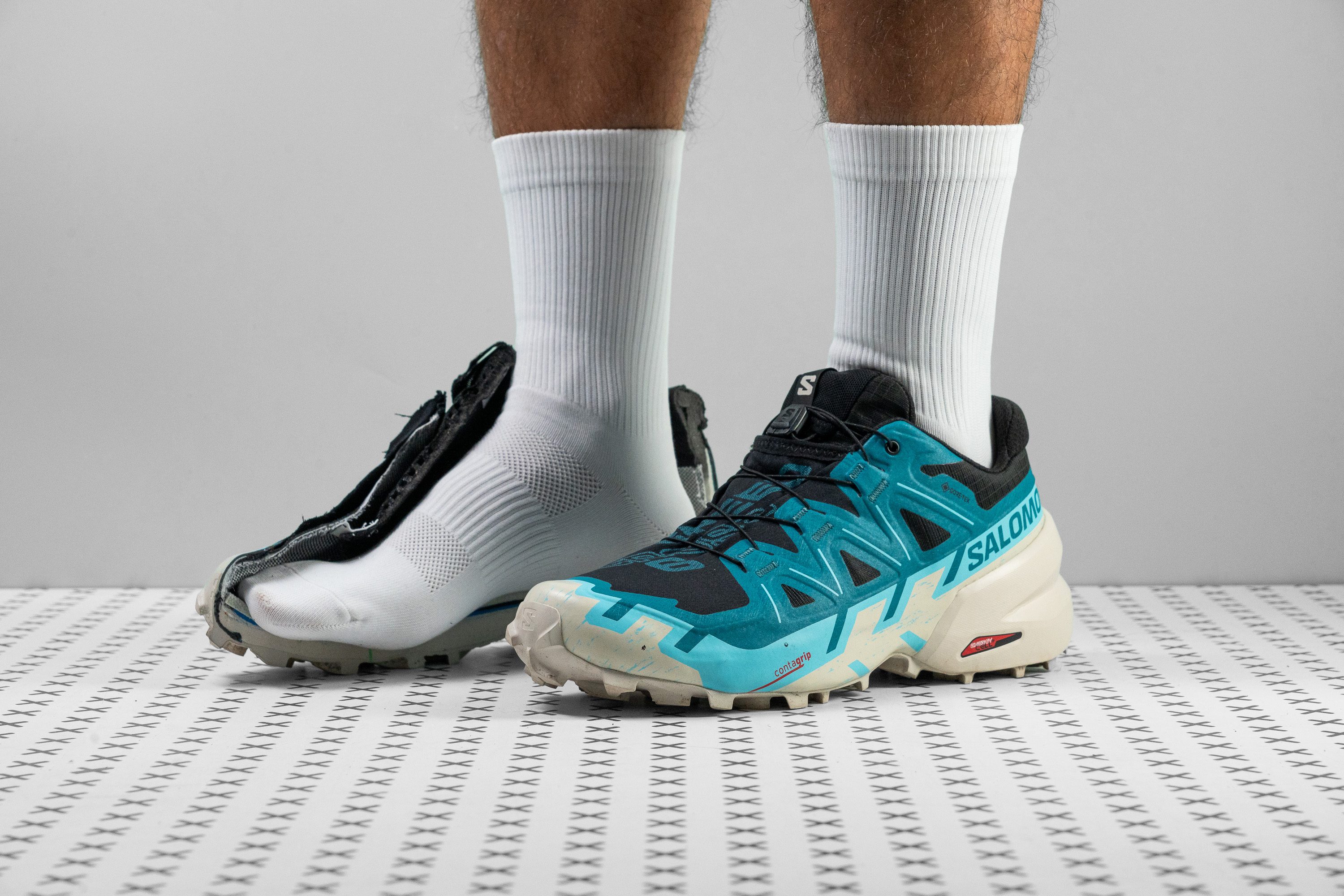
















































What makes it the best?
We tested the best winter running shoes through snowy runs and lab examinations and found that Speedcross 6 GTX offers the best grip. With robust lugs, a warm and protective upper, and a supportive platform, we felt agile and confident on icy paths.
Whether we speed through frozen or fresh snow, Speedcross displays excellent traction with robust 5.0 mm lugs. These are 1.5 mm deeper than average for extra grip on softer ground and are intentionally spaced to shed off snow easily. They’re chevron-shaped to enhance control on hilly terrains and sharp turns.
The full Gore-Tex upper keeps our feet warm and dry even in the coldest and wettest conditions. Under our microscope, we saw one of the most tightly-knit mesh uppers. It scored a low 1/5 on our breathability test — effectively keeping cold air out and blocking off water particles even more.
The midsole balances support and comfort through its stable platform and flexible build. The ride feels firm with the EnergyCell foam and our durometer confirms it’s 21.3% harder than average. Together with the rigid heel, these elements enhance our stability for fast-paced cornering. Balancing all the stiffness is an adaptive midsole that bends with a force that’s 20.5% lighter than average.
Those seeking a more cushioned ride may feel Speedcross is too harsh underfoot. We recommend exploring other options for better comfort.
Pros
- Fully functional Gore-Tex membrane
- Ample cushioning for long adventures
- Excels in challenging, technical terrain
- Rapidly sheds mud
- Agile and tenacious grip on twisted trails
- Remarkable durability
- Ideal for heel strikers
Cons
- Completely lacks breathability
- Midsole could feel overly firm for some
- Exceptionally heavy
- Narrow, snug-fitting toebox
Winter running shoes with the best durability
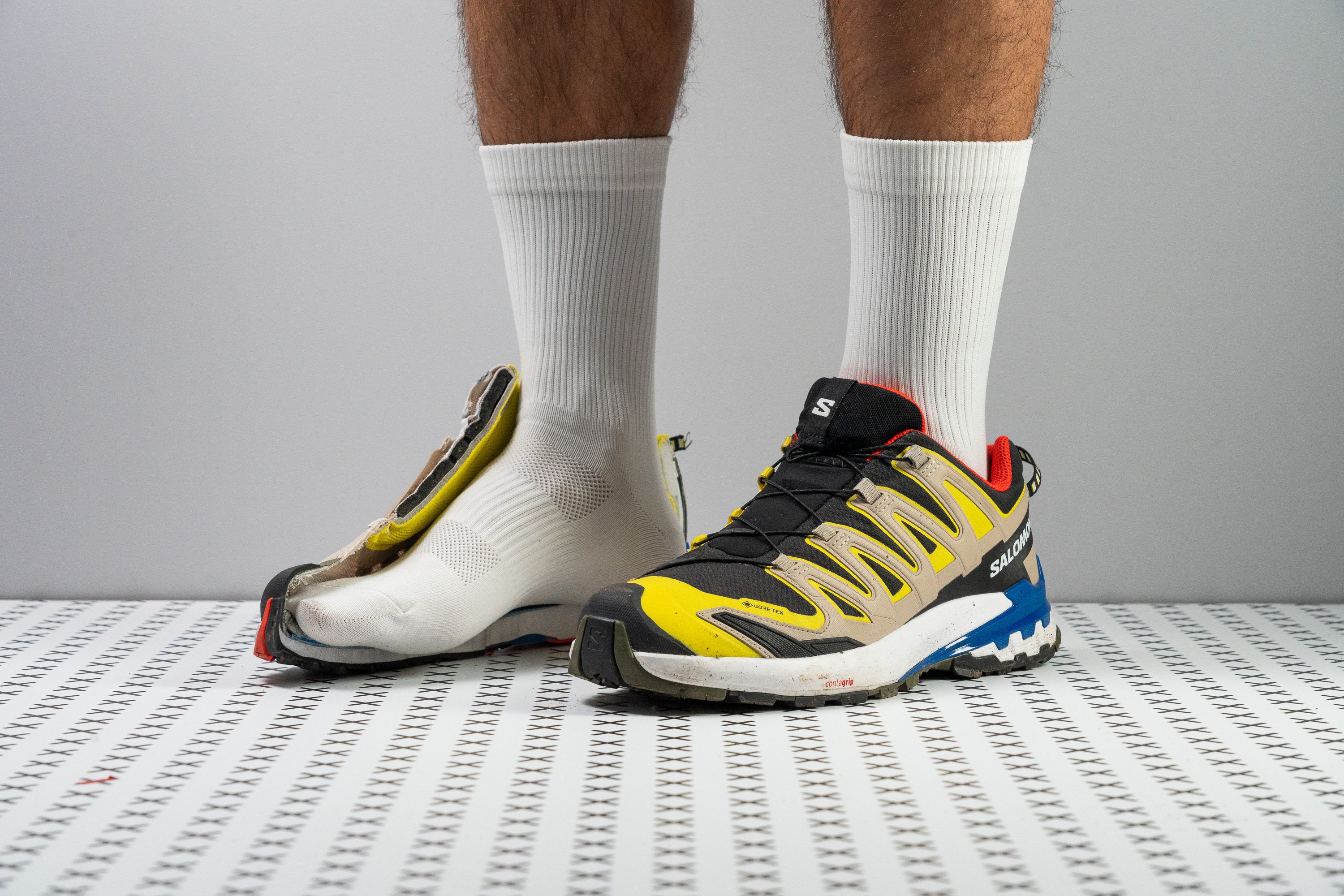













































What makes it the best?
With its airtight upper, firm midsole, and stiff 3D chassis, the Salomon XA Pro 3D v9 GTX feels like armour. This shoe proved its defence against unwanted elements in our runs and lab tests, making it hands-down the most durable winter running shoe.
In our permeability test, the Gore-Tex membrane effectively kept smoke and light out, earning the lowest 1/5 score. While this doesn’t sound ideal, it’s actually perfect for winter since it blocks snow and cold winds out and traps our body heat in.
Moving to the middle layer of defence, we have the firm midsole, which our durometer reveals is 23.6% harder than average. It doesn’t feel too harsh underfoot. Rather, it offered some rebound in our runs and remarkable stability. The 3D chassis also maintains our balance on uneven terrains by resisting any form of twists and ankle rolls. Our manual assessment also shows a high torsional rigidity of 5/5.
We find that the Contagrip outsole, with 2.8 mm lugs, is a healthy mix of grip and durability. This is confirmed by our steadiness on icy paths and the minimal amount of wear we observed after extensive testing.
The toebox tapers quite aggressively to the front, leaving little room for natural toe splay for those with wide feet or thick socks. For reference, it’s at 75.7 mm vs. the 78.1 mm average.
Pros
- Incredibly protective
- Extremely stable and supportive
- Watertight Gore-Tex upper
- Flexible and forgiving on the foot
- Makes a great hiking companion
- Effectively dampens landings
- Generously padded from heel to tongue
- No lace bite whatsoever
- Durable, high-quality construction
- Simple yet snazzy design
- Simple yet snazzy design
Cons
- Could be lighter
- Rather firm cushioning
- Upper needs breaking in
- Lacks the agility for technical trails
4 must-haves in winter running shoes
We recommend looking for these 3 features:
- Shoes that don’t become bricks in winter, meaning they don’t become insanely firm and stiff
- Warm shoes. Shoes that don’t breathe (well) trap the heat and are better for winter
- Waterproof membrane if you plan to run in wet weather as well (maybe snow)
- Grip that will keep you safe and upright wherever you run (road, trail)

Performance in cold weather: lab tests
There are 2 tests that we perform at room temperature and after freezing the shoes: measuring the softness of the midsole and the stiffness of the shoe.
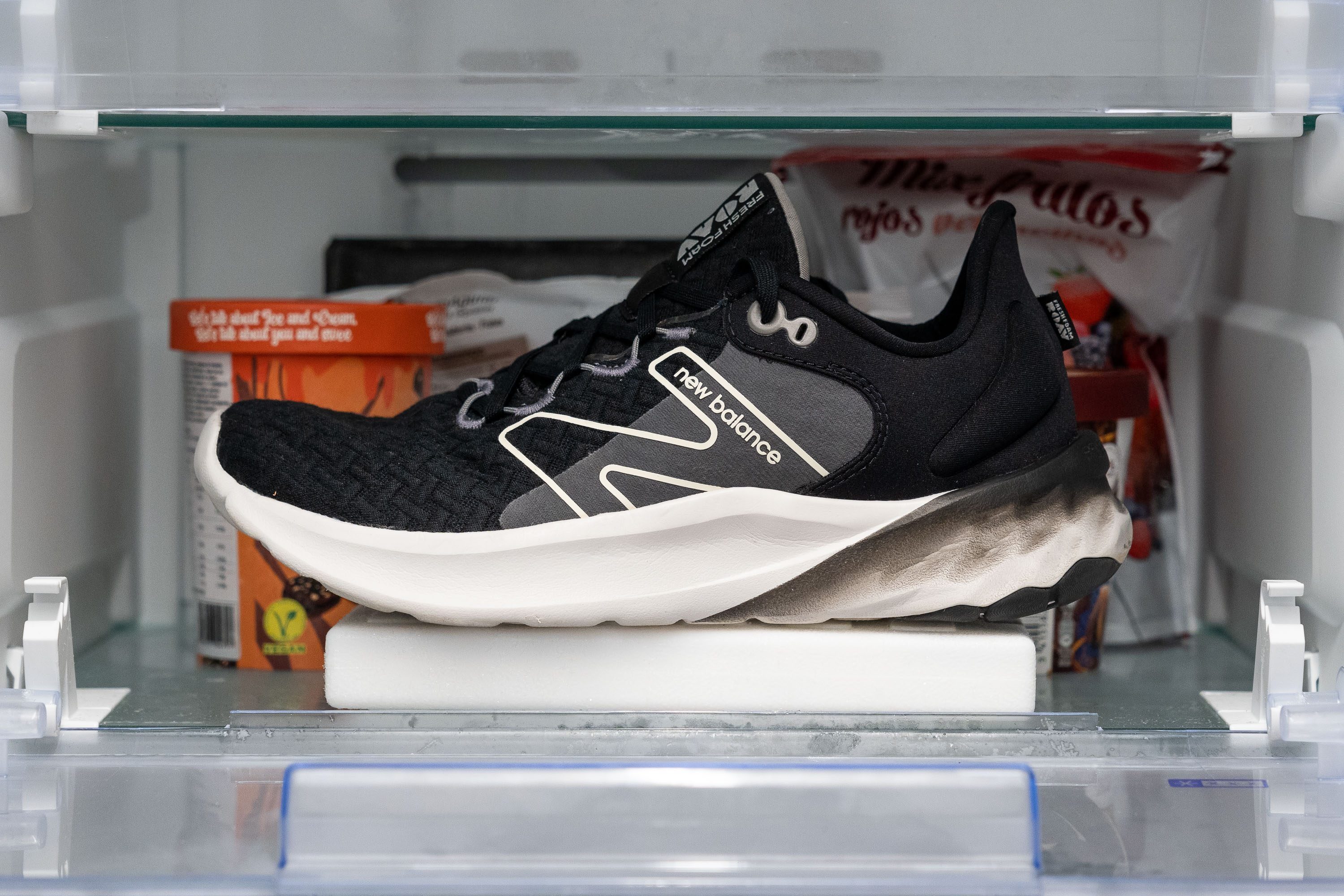
We do this to simulate cold weather conditions and investigate what happens with the feel and performance of the shoe.
|
When it comes to interpreting the results, the bigger the difference in the results (room temperature vs post-freezer), the bigger the change in the shoe's performance. However, some shoes are very flexible (or soft) to start with, so even with the big change, they remain averagely flexible (or soft) looking at the big picture (all running shoes we have tested). That means you will notice the change, but it does not mean that it’s impossible to run in such a shoe in cold weather. |
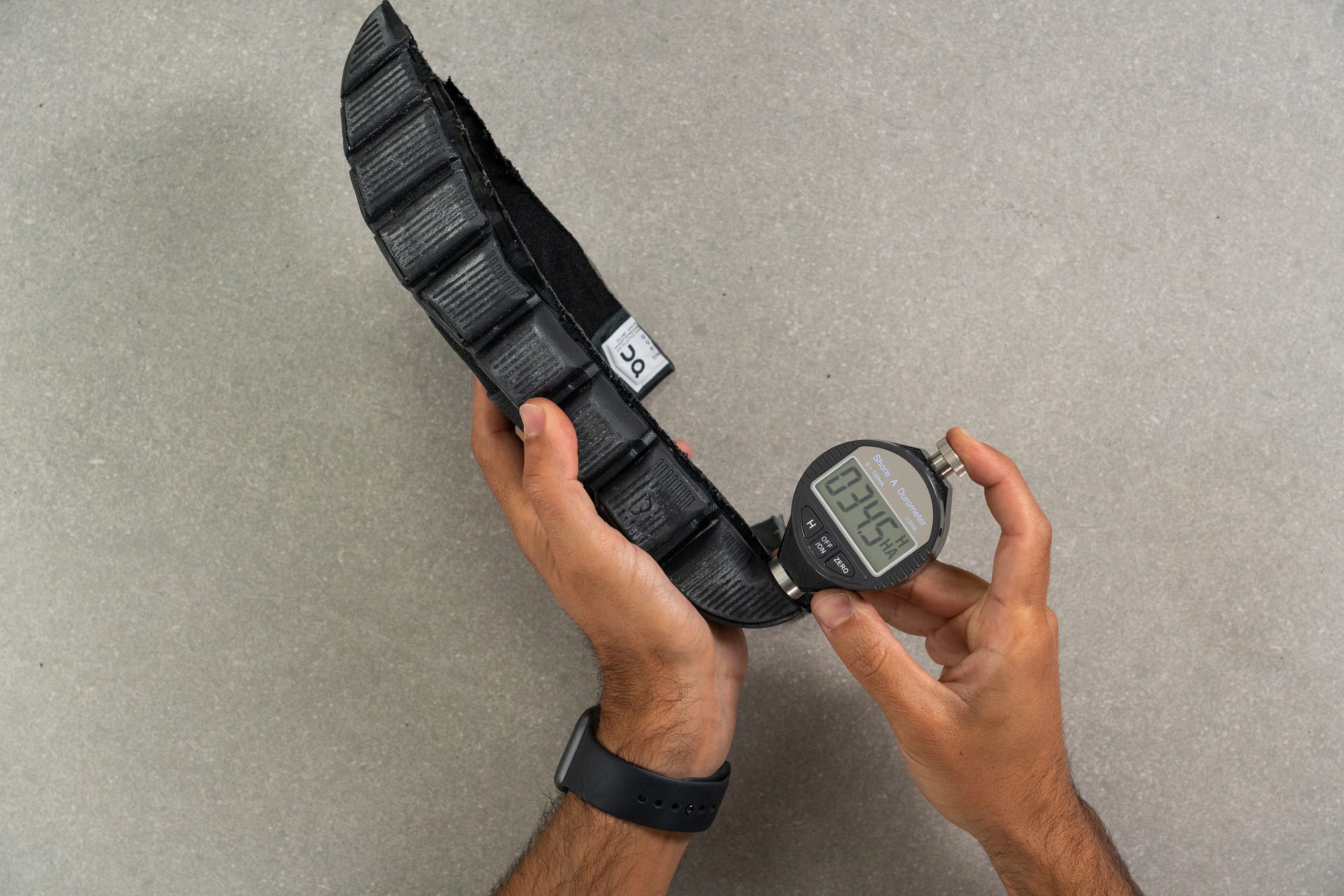
When looking at the durometer results, it’s important to note that softer foams are rated with lower numbers on the durometer, and higher numbers indicate a firmer midsole.

When we look at the stiffness results, higher numbers in Newtons mean that more force was needed to bend the shoe to 30 degrees. Lower numbers describe more flexible shoes as they were easier to bend.
When you read reviews on our website, you can always see how the shoe compares to the overall average if you need a broader context.
Road winter shoes with the smallest stiffness and softness changes in cold weather
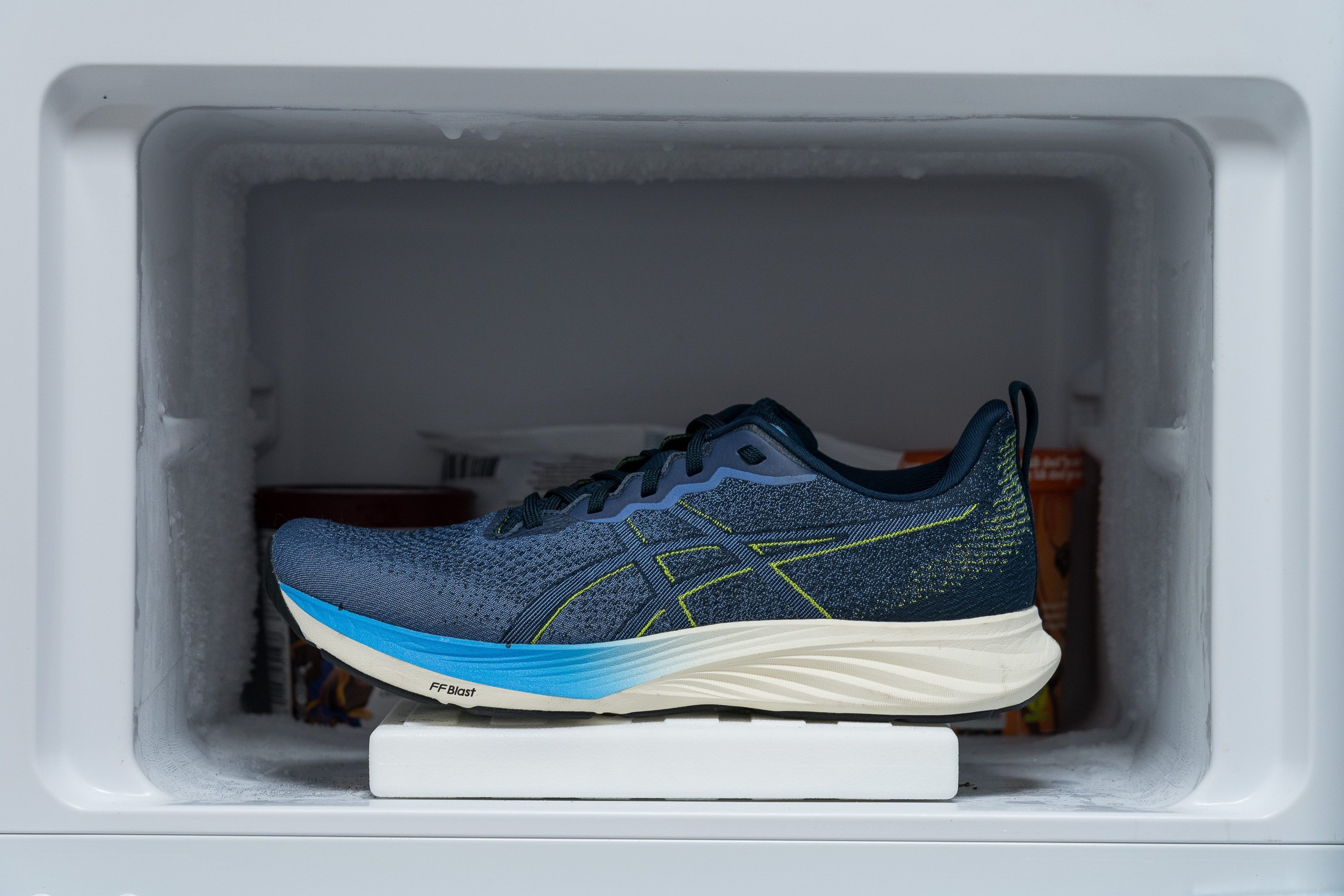
Trail winter shoes with the smallest stiffness and softness changes in cold weather
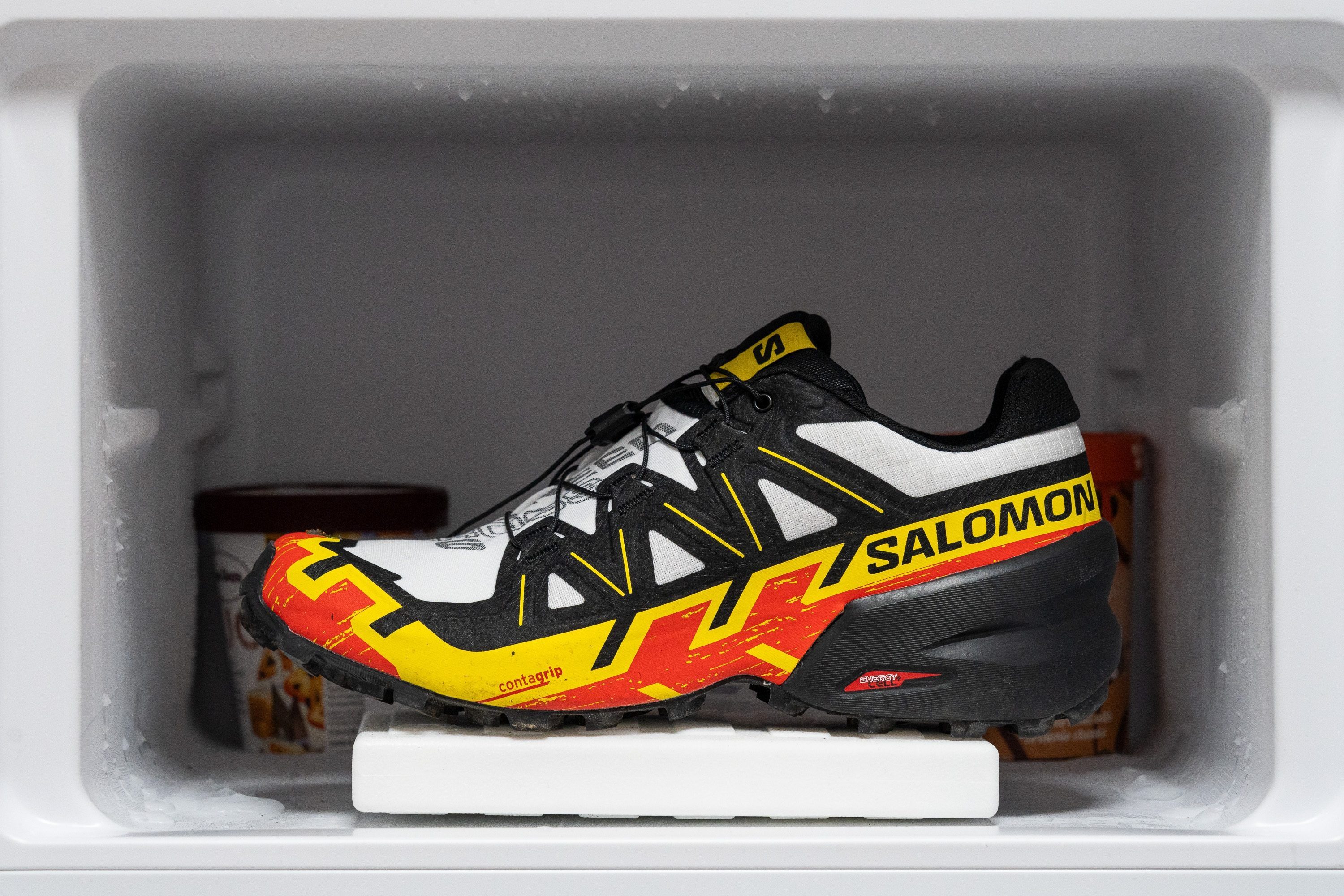
Warmth needed: finding the best upper for winter
Warm shoes are shoes that trap the heat which means they do not breathe. Fortunately, we have data on this!
When we pump the smoke into the shoe, we wait to see the smoke come out. We pay attention to the location—where it comes out—and the amount—how much comes out and at what pace. Based on this, we rate the shoe's breathability on a 1-5 scale. Winter shoes are rated 1/5, meaning they do not breathe at all.
To investigate this further, we put the upper under the microscope.
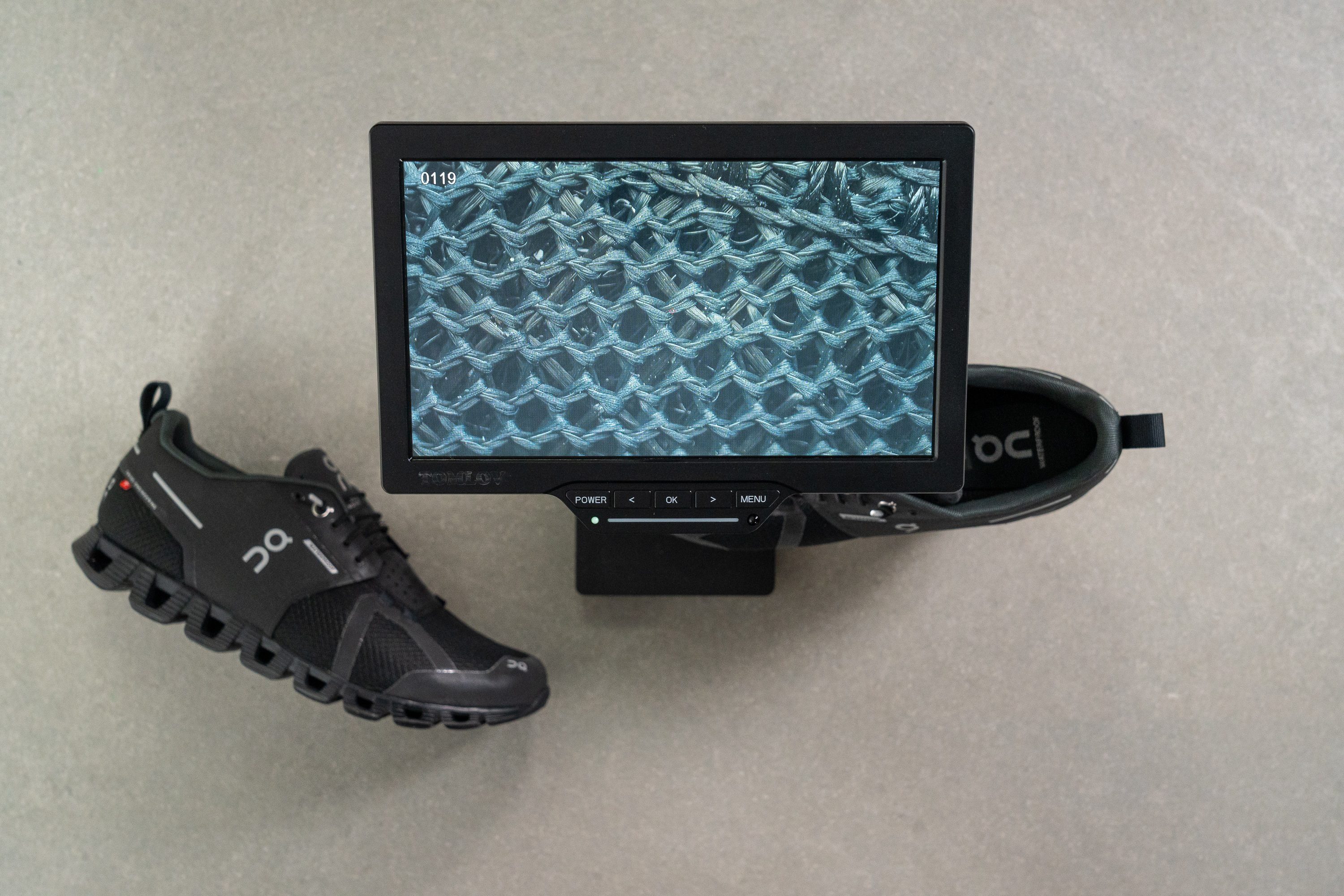
Breathable uppers have a loose structure and maybe even large ventilation holes, while non-breathable uppers have a very tight structure or noticeable layers that are too thick for the air to get out.

And here, you should make a decision. Do you need a regular warm winter running shoe or a waterproof one? Waterproof ones are more expensive but definitely needed if you plan to run while it’s raining or snowing! Or if there are puddles or mud on our way.

Waterproof running shoes feature a waterproof membrane, the most popular being GTX or Gore-Tex. We wrote a lot about waterproof running shoes, how to recognise them and what to look out for in our Guide on waterproof running shoes.
|
Keep in mind that waterproof running shoes are not a good idea when the water levels are too high, meaning the water will get inside your shoes. Then, that water is staying in. Regardless of what the producers of waterproof membranes are saying, those uppers are not breathable enough for the shoe to dry out on its own as you continue running. Plus, in winter, it’s too cold for that to happen. |
Road: grip in winter running shoes
Here again, we have to know: do you plan to run in cold but dry weather or in cold wet weather? Because the outsoles that work well on dry surfaces look significantly different from outsoles that grip wet surfaces.
Here are our general recommendations:
- Look for maximal rubber coverage. The exposed midsole simply slides on wet flat surfaces.
- Look for a lot of grooves and channels. Channels work the same as in car tyres.
To paint the picture, look at the examples below.

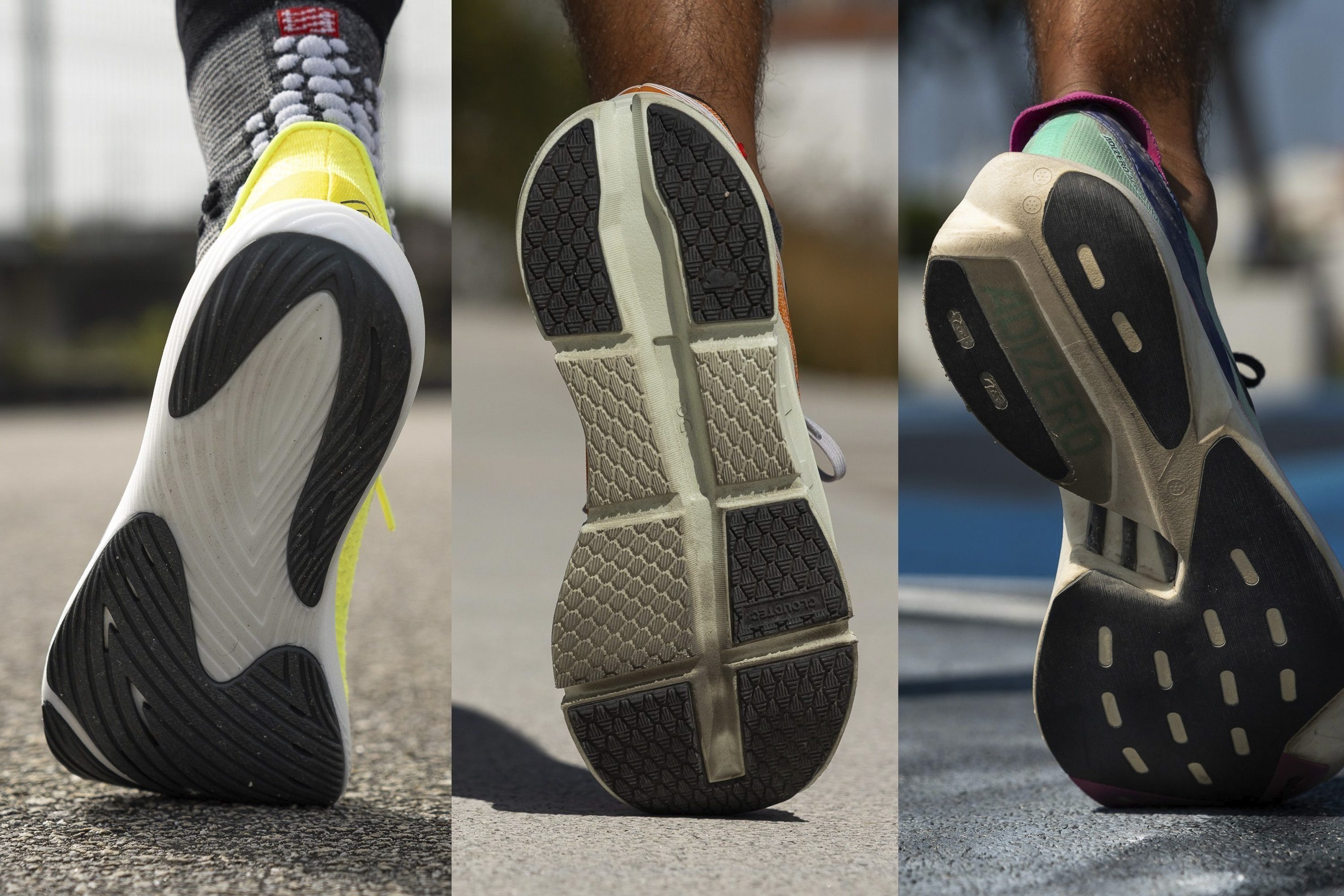
Fortunately, we also have a machine that helps us test the traction in running shoes. We test traction in wet weather (the surface is always wet, so-called critical conditions). The higher the result, the better.
For wet surfaces, we actually recommend finding running shoes that scored 0.45 or higher on our traction test.
Trails: best grip for winter runs
If you plan to run on trails in winter, there are again 3 options: running in dry weather, wet weather, or a mix of both. Here’s what we recommend:
- Lugs that are 2mm or less thick: for road-to-trail adventures where you’re doing a bit of everything.
- Lugs that are 2-4mm thick: for moderate terrain.
- Lugs that are thicker than 4mm: for technical terrain. This is especially important for mud and snow.
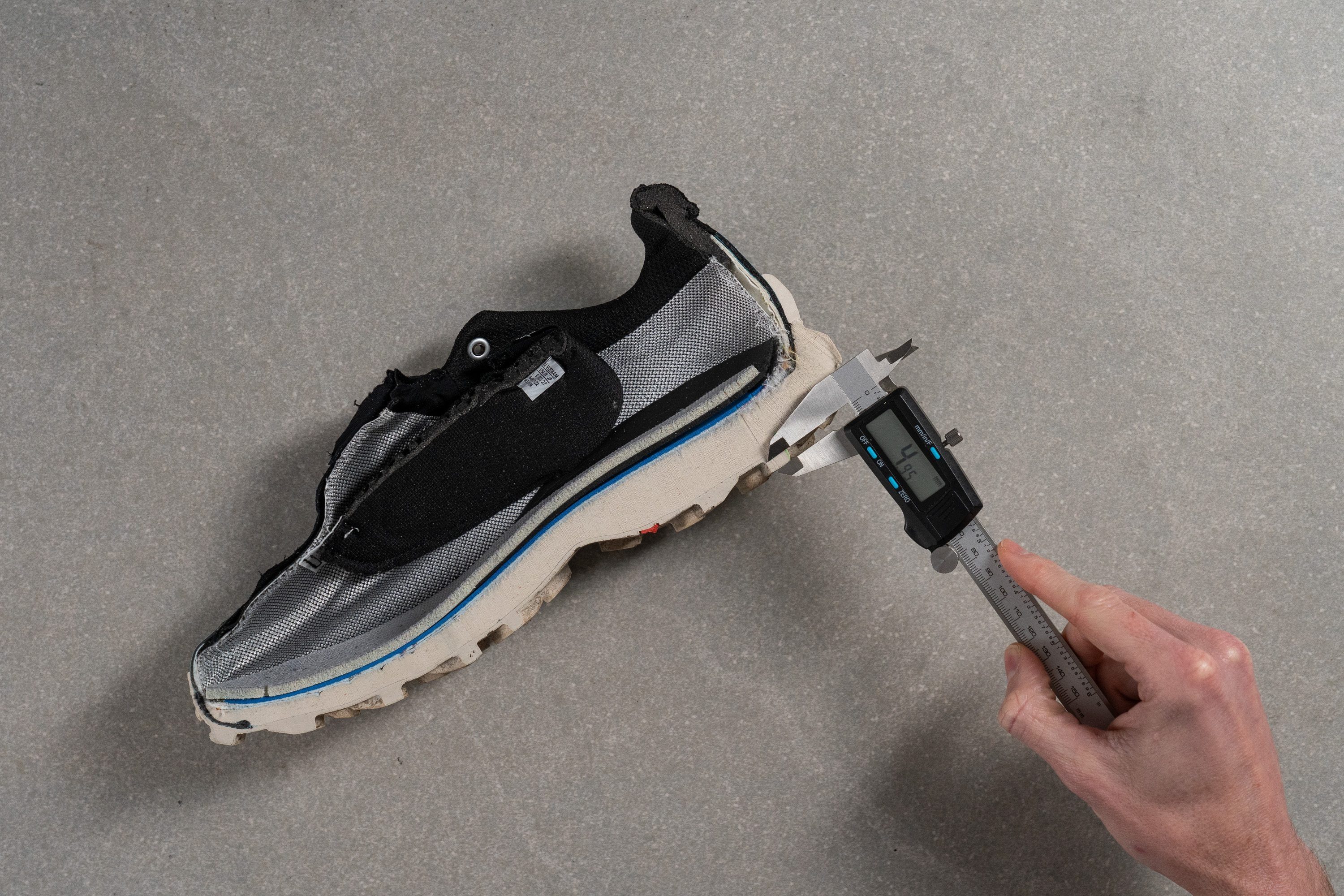
Of course, lugs don’t tell the whole story. We should also look at the construction of the shoe, whether the fit is aggressive, whether it’s bulky, and what’s the tread pattern like.
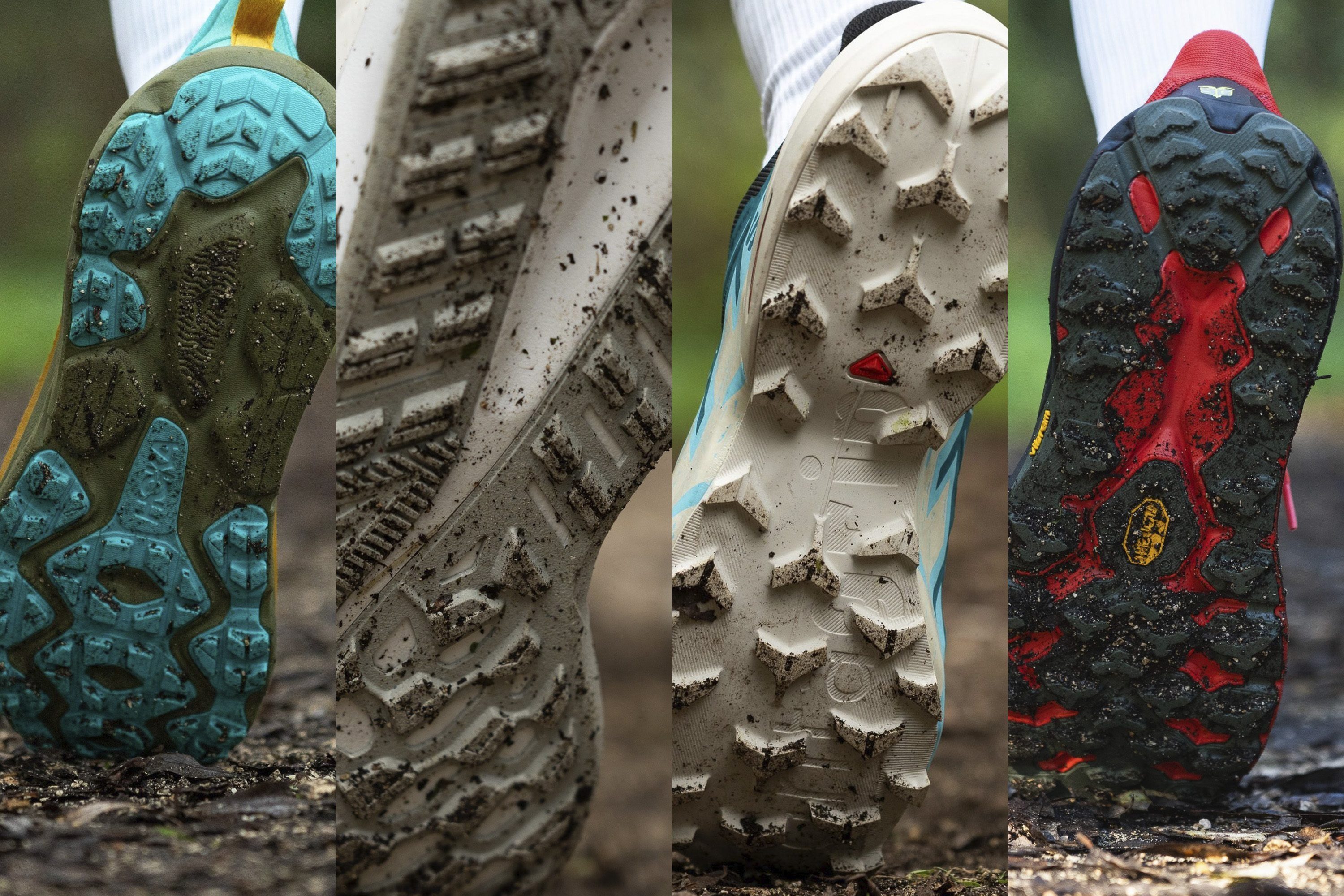
Based on our experience, we recommend looking for patterns like these:
- Aggressive wide and thick lugs that are placed further apart: they are great for gripping and shedding mud
- More lugs that are multidirectional work great on varying terrain (downhills and uphills)
- Varied angles and shapes of lugs are great for lose ground like sand or soft-ground trails covered in debris
Outsole durability in winter running shoes
We’ve put so much focus on the outsoles because they are in charge of the grip but, what if they just wear out too soon? What if there’s no more rubber left to protect you and offer grip? Well, then we suggest getting new shoes.
Fortunately, we test the durability of the outsole in our lab to get an idea of whether there will be premature wear. We use a dremel for this test, and we press it against the outsole (both in road and trail shoes, except in trail, we press it against the lugs) always at the same time duration, RPMs, and force.
Once the damage is done, we use a tyre tread gauge to precisely measure how deep the dent is. The deeper the dent, the less durable the outsole. So, we want the numbers to be as small as possible.
